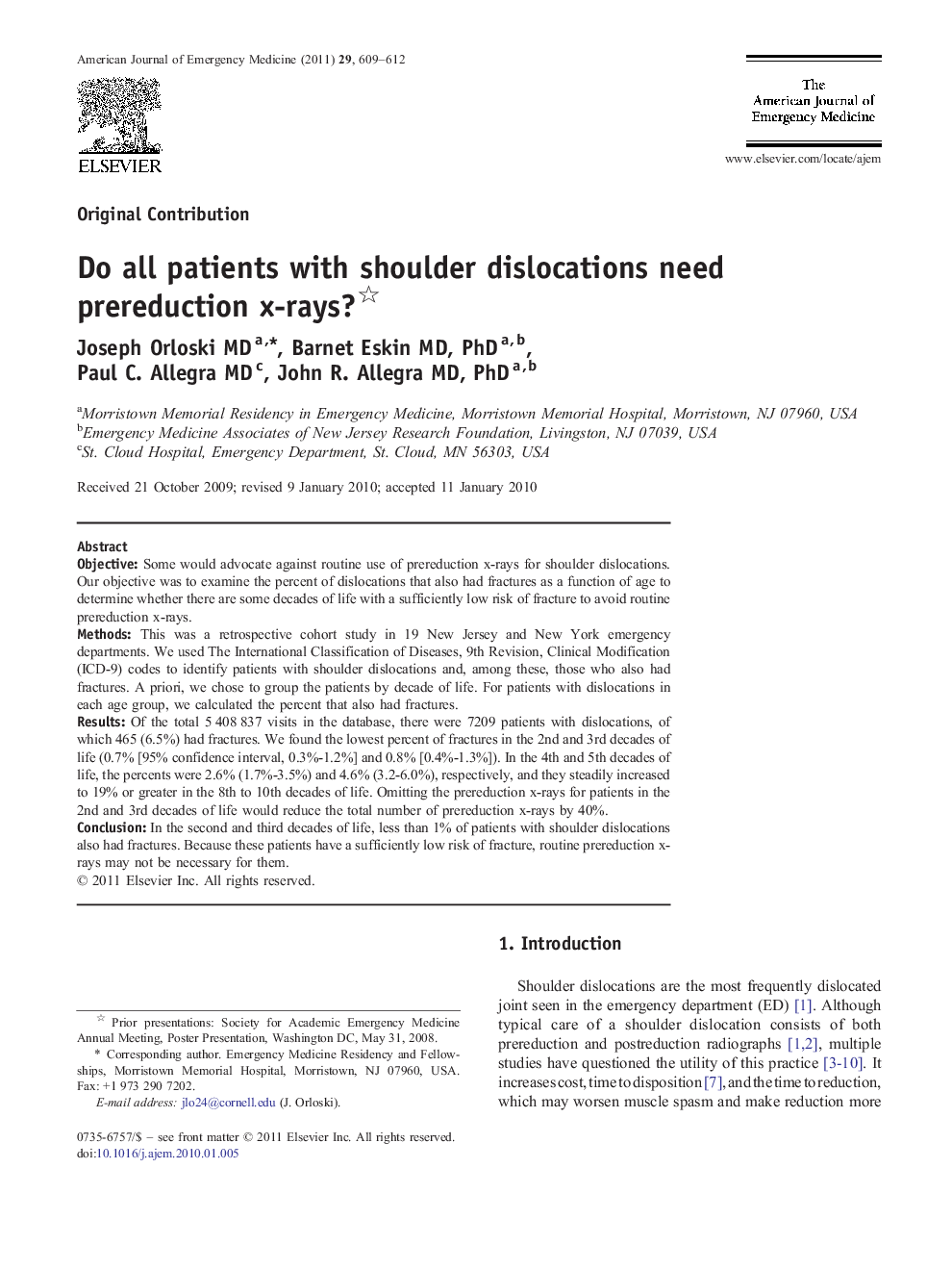| Article ID | Journal | Published Year | Pages | File Type |
|---|---|---|---|---|
| 3225389 | The American Journal of Emergency Medicine | 2011 | 4 Pages |
ObjectiveSome would advocate against routine use of prereduction x-rays for shoulder dislocations. Our objective was to examine the percent of dislocations that also had fractures as a function of age to determine whether there are some decades of life with a sufficiently low risk of fracture to avoid routine prereduction x-rays.MethodsThis was a retrospective cohort study in 19 New Jersey and New York emergency departments. We used The International Classification of Diseases, 9th Revision, Clinical Modification (ICD-9) codes to identify patients with shoulder dislocations and, among these, those who also had fractures. A priori, we chose to group the patients by decade of life. For patients with dislocations in each age group, we calculated the percent that also had fractures.ResultsOf the total 5 408 837 visits in the database, there were 7209 patients with dislocations, of which 465 (6.5%) had fractures. We found the lowest percent of fractures in the 2nd and 3rd decades of life (0.7% [95% confidence interval, 0.3%-1.2%] and 0.8% [0.4%-1.3%]). In the 4th and 5th decades of life, the percents were 2.6% (1.7%-3.5%) and 4.6% (3.2-6.0%), respectively, and they steadily increased to 19% or greater in the 8th to 10th decades of life. Omitting the prereduction x-rays for patients in the 2nd and 3rd decades of life would reduce the total number of prereduction x-rays by 40%.ConclusionIn the second and third decades of life, less than 1% of patients with shoulder dislocations also had fractures. Because these patients have a sufficiently low risk of fracture, routine prereduction x-rays may not be necessary for them.
